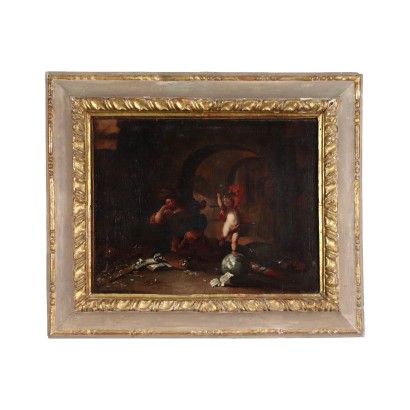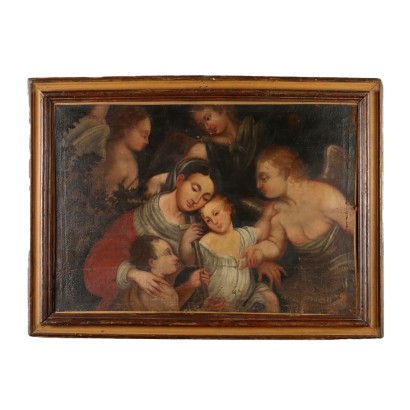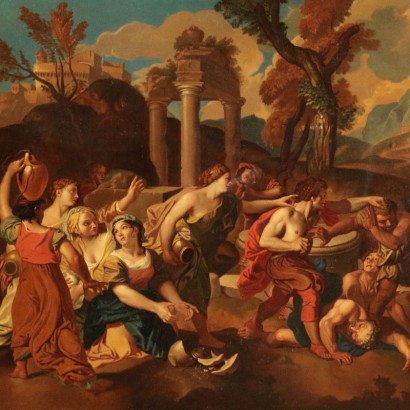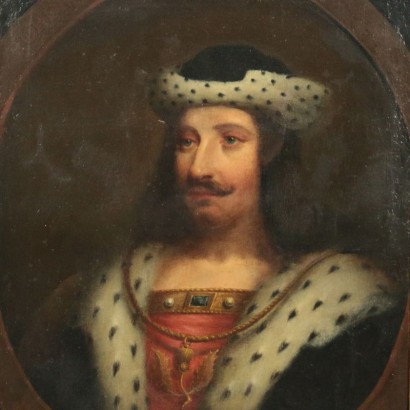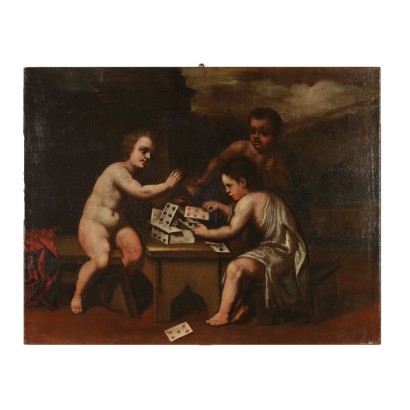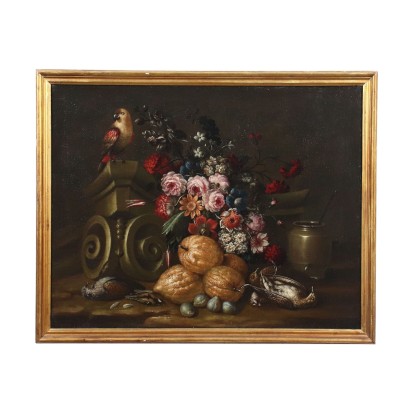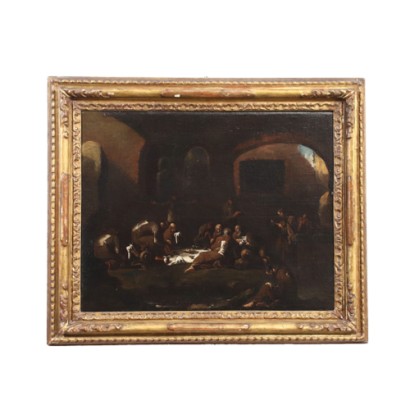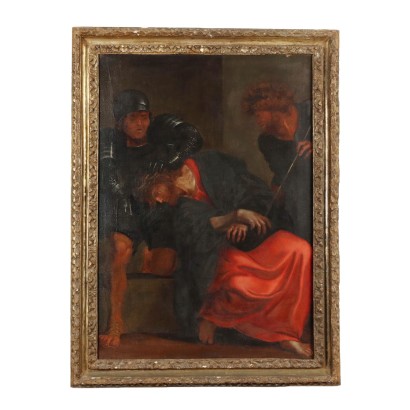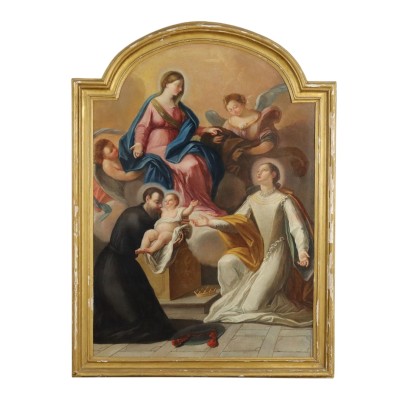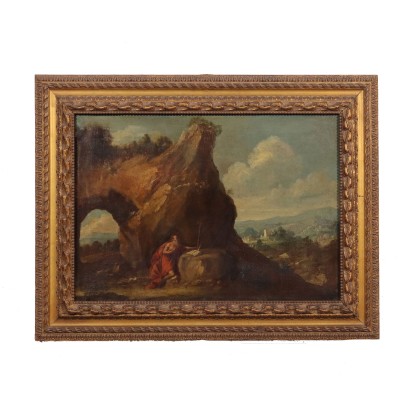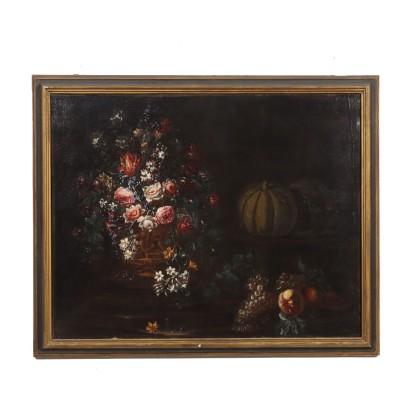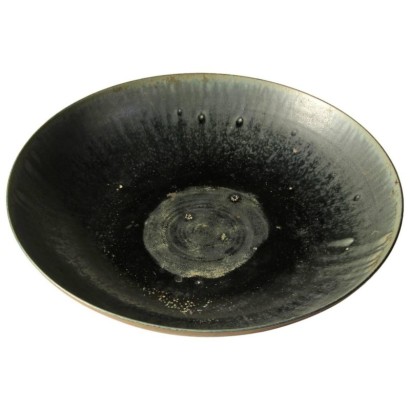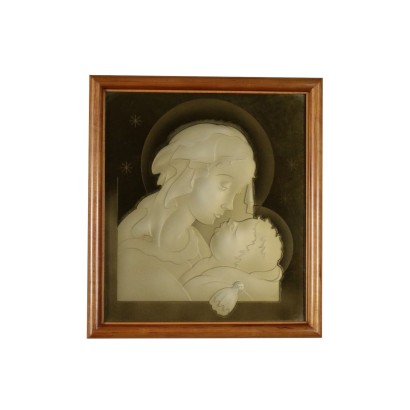Sic Transit Gloria Mundi Oil on Canvas France XVII Century
Features
Artwork title: "Sic transit gloria mundi"
Artistic school: French School
Age: 17th Century / 1601 - 1700
Subject: Allegorical/Mythological Subject
Origin: France
Artistic technique: Painting
Technical specification: Oil on Canvas
Description : "Sic transit gloria mundi"
Oil on canvas. French school of the seventeenth century. The scene is set in front of an open arch in a stone structure, which gives access to uninhabited and bare rooms. Two figures, a woman and a putto, are delighting with different instruments: she plays a mandolin and, scattered on the ground, there is a palette of colors, books, jewels, armor and weapons, other musical instruments, and a globe. on which the putto stands, producing soap bubbles; on the ground in the center, a cartouche mentions the saying \"Sic transit gloria mundi\". This is a famous Latin phrase, which in Italian means \"Thus passes the glory of the world\", used to emphasize the ephemeral value of the things of life, symbolized by various objects (arts, literature, wealth ...), destined to vanish like soap bubbles. The whole scene therefore has a strong allegorical / symbolic meaning: even the sunset, which can be glimpsed on the left, expresses the same concept, everything in the world is destined to end. The theme of the transience of life, always present in art, had its maximum development in the seventeenth century, closely related to the sense of precariousness that hit the European continent following the Thirty Years' War and the spread of plague epidemics. With allegorical scenes like this, rather than with the Vanitas or Memento mori, or scenes or still lifes with symbolic elements alluding to the theme of the transience of life (the skull, the candle that is consumed, a clock, a broken flower), we wanted precisely to emphasize the ephemeral condition of existence, of man and earthly goods. On the back of the work there is a cartouche that says a probable attribution to Simon Vouet. The painting, restored and relined, is presented in a re-adapted antique frame.
Product Condition:
Product in good condition, with small signs of wear.
Frame Size (cm):
Height: 76
Width: 90
Depth: 6
Artwork dimensions (cm):
Height: 50
Width: 64



